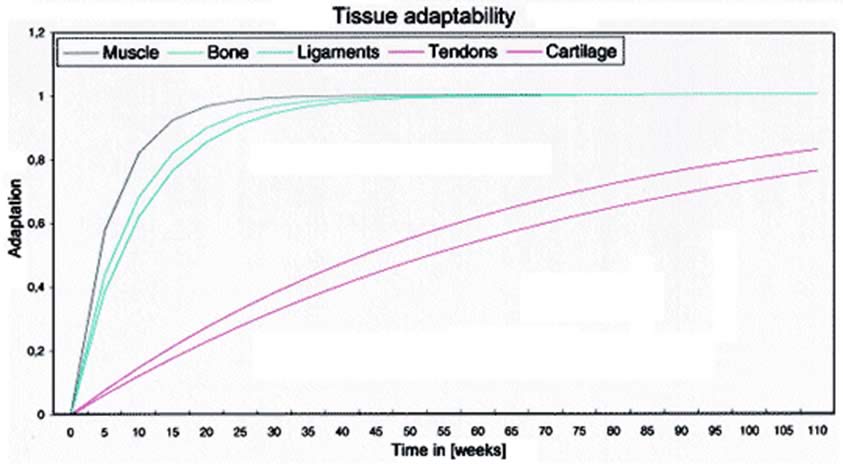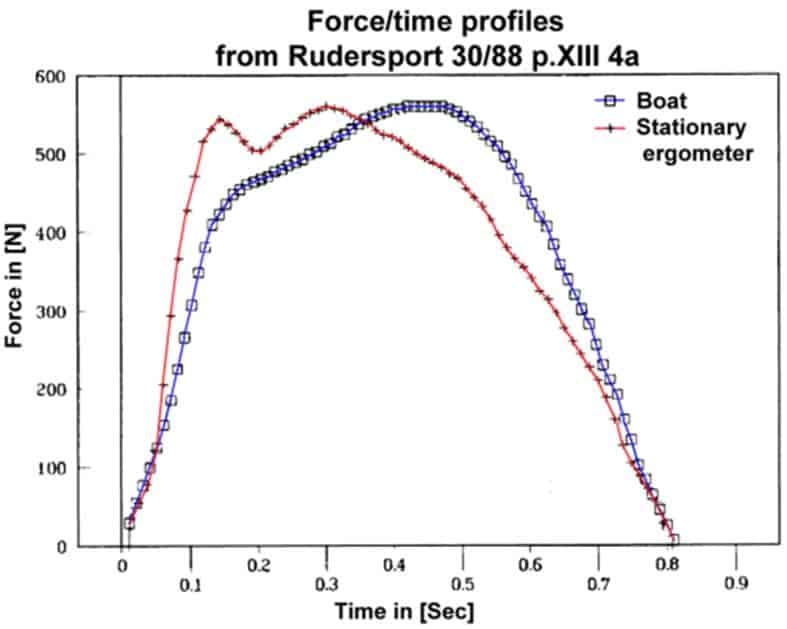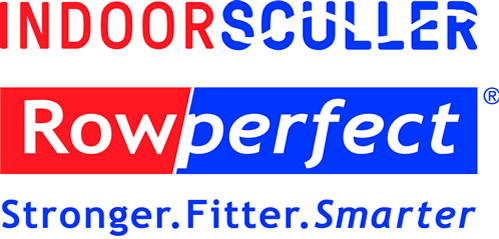In the past rowing was a relatively safe sport with a low incidence of injuries compared to other sports. Occasionally some back problems did occur and primarily during winter time. These problems could be related to land based exercises, such as weight lifting, and they tended to disappear when the rowing season started and more rowing in the boat was done. Over the last ten to fifteen years, however, this situation changed gradually, but dramatically. This is true for back injuries and injuries of cartilage, ligaments and tendons. This chapter is meant to pinpoint some possible causes of this phenomenon and to suggest some preventive measures.
It can be stated that generally injuries are caused by the combination of the physiological response of the organism on training and the physical/mechanical properties of the equipment used.
The physiological response of the organism on training
Training is providing the body with stimuli to adapt. To optimise the effect of the training, the load to the organism should be kept within a certain band width of the maximum allowable load. Too low a load provides no training effect; too high can lead to injuries.
The speed with which the various tissues of the human body adapt to a higher load varies widely from one tissue to another. The speed of adaptation is inversely proportional to the half-life of the cells of the tissue, being defined as the time required by the organism to replace half of the cells of a given tissue. In the sequence muscle > bone > ligaments > tendon > cartilage, the half-life increases with over a factor of 13, from 4 wks for muscle to over 1 yr for cartilage. The speed of adaptation for the different types of tissue is illustrated in the following graph.

From this graph it can be seen that almost full adaptation for muscle tissue can be achieved in approx. 35 weeks, whereas for cartilage only a 75 % adaptation can be expected over a period of two years.
For the speed with which the load on the total organism can safely be increased, each and every moment the weakest tissue in the total chain is the rate determining step.
For many a young athlete, and especially for those young athletes without a previous sports career, this weakest link is the cartilage, because it adapts the slowest to a higher load. The next danger areas are the tendons and ligaments.
For injury prevention, avoiding peak loads is of crucial importance. By avoiding peak loads, and keeping below the maximum allowable load for the weakest category of tissue, a maximum total load of the organism and therefore a maximum training effect can be achieved safely.

Possible causes of increased injury frequency
Compared to the past, there are two factors which might explain the increased incidence of rowing related injuries. These factors are:
- The rate at which at present the training load to the rowers can be increased.
- The magnitude of the forces that act on back and knees during the stroke, and the speed with which these forces increase during a stroke recovery cycle (force/time gradient).
The rate at which in the past the training load, to which young rowers were submitted, could be increased was limited by the speed at which the rowing technique in the boat could be developed. In the boat, a poor technique or loss of technique due fatigue, will automatically limit the maximum attainable level of exhaustion. This protects the rower from himself (and from his coach).
Over the last 15 years, the use of rowing tanks and stationary ergometers for winter-training has increased dramatically. The majority of these machines require hardly any technique, and one can easily exhaust oneself to a much higher degree than in the boat. The automatic protection against over-load which one experiences in the boat does not apply to these machines. The risk of over-load, certainly for inexperienced rowers, is magnified by the fact that these machines are used for selection, condition tests, and competitions.
Because of the low requirements for technique of rowing tanks and stationary ergometers, even an inexperienced rower, from the very beginning, can use his full force, which is not possible in the boat. In addition, the majority of the rowing ergometers used are of the stationary, “fixed stretcher” type.
The dynamic behaviour of these machines varies enormously from that of a light racing shell freely floating on the water; their dynamics rather resemble that of an infinitely heavy boat or of a rowing tank.
This difference in dynamics between a “fixed stretcher ergometer” and light racing shell forces the rower to adapt his co-ordination pattern, and has a dramatic effect on the force/time gradient of the force on the handle (and hence on the lower back). The following graph taken from Rudersport 30/88, shows a force/time curve of a fixed stretcher ergometer and of a boat.
The characteristic difference in force/time profiles is clearly visible.
From this graph you can calculate
that the force/time gradient with which the force on the handle increases at
the steepest part of the curve amounts to approx. 7.800 N/s on the fixed
stretcher ergometer compared to 4.000 N/s in the boat, so almost doubles.
Training on this type of equipment means exerting a shock-load on the lower
back twice as big as in the boat.
A similar phenomenon occurs on these machines at the end of the stroke. The
higher body velocity at the end of the stroke forces the rower to reverse the
motion of his upper body by using the big hip flexors, a known cause of back
problems.
As far as knee problems are concerned because a “fixed stretcher” ergometer behaves like boat which is infinitely heavy, at the end of the recovery/beginning of the stroke, the rower has to decelerate and accelerate his total body weight 5 to 7 times speed differential then he has to do in the boat (see The ROWPERFECT dynamic boat simulator, the innovative training tool for the new millennium, paragraph 2 “Analysis of the dynamics of the rowing motion on the water and on land.”). Especially at higher stroke rates during races and/or condition tests, over-compression of the knees at the catch and a combination of shear and compression at the finish, is inevitable on this type of machine. Also during endurance training, due to fatigue, a gradual increase in over-compression of the knees can clearly be seen.
Because of their “stationary” behaviour, these machines therefore create an inherent danger for the younger athlete without a previous sport career, using them for endurance training, condition tests or races.
Recommendations
The following recommendations can be made:
To prevent injuries, the maximum allowable load to the weakest link in the rowing organism can not repetitively be exceeded, and peak loads should be avoided.
To avoid peak loads it is essential that equipment for training and condition testing truly simulates the dynamics of a light racing shell. The most common “fixed stretcher” ergometers are not fit for this purpose.
Certainly for the younger athlete without a previous sport career, condition tests, selection tests and races on “fixed stretcher” ergometers have to be strongly discouraged.
The elasticity of a suitable dynamic boat simulator should resemble the overall elasticity of oar-rigger-boat main shoulder- stretcher as closely as possible.
A suitable dynamic boat simulator should force the rower to maintain technique at higher levels of fatigue, to avoid overloading.
To properly control the loads on the various parts and tissues of the athlete during training on dynamic boat simulators, it is recommended to have the athletes train on a prescribed stroke force/length profile, which may not be exceeded.
Peak-loads in the boat can be avoided, to a large extent, by synchronising the crew stroke profiles during wintertime on a suitable dynamic boat simulator. This prevents the individual rower from being forced to pull the boat all by himself for a split second.
Having part of the crew making “power tens” with the others stabilising the boat should be forbidden.
Conclusions
An important proportion of the injuries inflicted upon our oarsmen during wintertime can be attributed to the repetitive shock-loads generated by rowing tanks or “fixed stretcher” ergometers during endurance training, condition tests, selection tests and races. This is true not only for injuries of the lower back, but of the knees and of the tendons as well.
A policy of some clubs where tests on this equipment are part of the selection criteria, forces young rowers to during wintertime to accept the risk of injury, to prepare for these tests, and at the tests themselves to qualify. This often with the result that talented young athletes are prematurely forced to stop rowing by injuries that could have been prevented.
